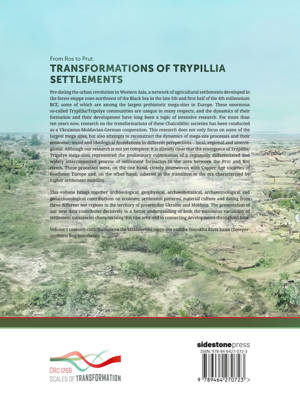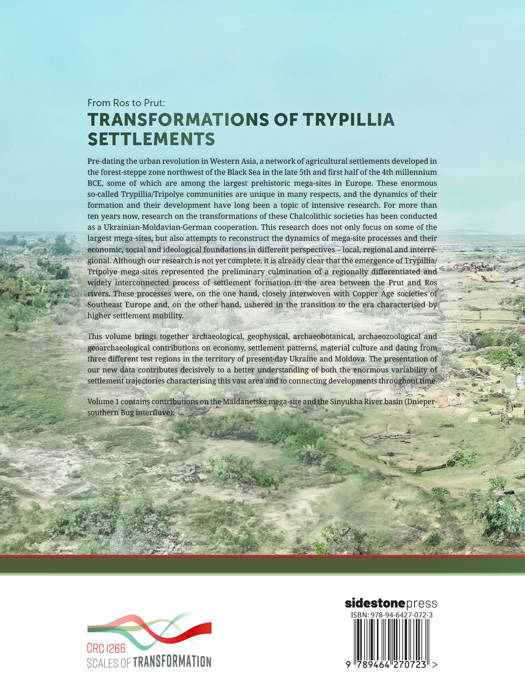
- Retrait en 2 heures
- Assortiment impressionnant
- Paiement sécurisé
- Toujours un magasin près de chez vous
- Retrait gratuit dans votre magasin Club
- 7.000.0000 titres dans notre catalogue
- Payer en toute sécurité
- Toujours un magasin près de chez vous


271,45 €
+ 542 points
Format
Description
Pre-dating the urban revolution in Western Asia, a network of agricultural settlements developed in the forest-steppe zone northwest of the Black Sea in the late 5th and first half of the 4th millennium BCE, some of which are among the largest prehistoric mega-sites in Europe. These enormous so-called Trypillia communities are unique in many respects, and the dynamics of their formation and their development have long been a topic of intensive research. For more than ten years now, research on the transformations of these Chalcolithic societies has been conducted as a Ukrainian-Moldavian-German cooperation. This research does not only focus on some of the largest mega-sites, but also attempts to reconstruct the dynamics of mega-site processes and their economic, social and ideological foundations in different perspectives - local, regional and interregional. Although our research is not yet complete, it is already clear that the emergence of Trypillia mega-sites represented the preliminary culmination of a regionally differentiated and widely interconnected process of settlement formation in the area between the Prut and Ros rivers. These processes were, on the one hand, closely interwoven with Copper Age societies of Southeast Europe and, on the other hand, ushered in the transition to the era characterised by higher settlement mobility.
This volume brings together archaeological, geophysical, archaeobotanical, archaeozoological and geoarchaeological contributions on economy, settlement patterns, material culture and dating from three different test regions in the territory of present-day Ukraine and Moldova. The presentation of our new data contributes decisively to a better understanding of both the enormous variability of settlement trajectories characterising this vast area and to connecting developments throughout time.
Volume 1 contains contributions on the Maidanetske mega-site and the Sinyukha River basin (Dnieper-southern Bug interfluve).
This volume brings together archaeological, geophysical, archaeobotanical, archaeozoological and geoarchaeological contributions on economy, settlement patterns, material culture and dating from three different test regions in the territory of present-day Ukraine and Moldova. The presentation of our new data contributes decisively to a better understanding of both the enormous variability of settlement trajectories characterising this vast area and to connecting developments throughout time.
Volume 1 contains contributions on the Maidanetske mega-site and the Sinyukha River basin (Dnieper-southern Bug interfluve).
Spécifications
Parties prenantes
- Auteur(s) :
- Editeur:
Contenu
- Nombre de pages :
- 360
- Langue:
- Anglais
- Collection :
Caractéristiques
- EAN:
- 9789464270730
- Date de parution :
- 05-11-25
- Format:
- Livre relié
- Format numérique:
- Genaaid
- Dimensions :
- 210 mm x 279 mm

Seulement chez Librairie Club
+ 542 points sur votre carte client de Librairie Club
Les avis
Nous publions uniquement les avis qui respectent les conditions requises. Consultez nos conditions pour les avis.








